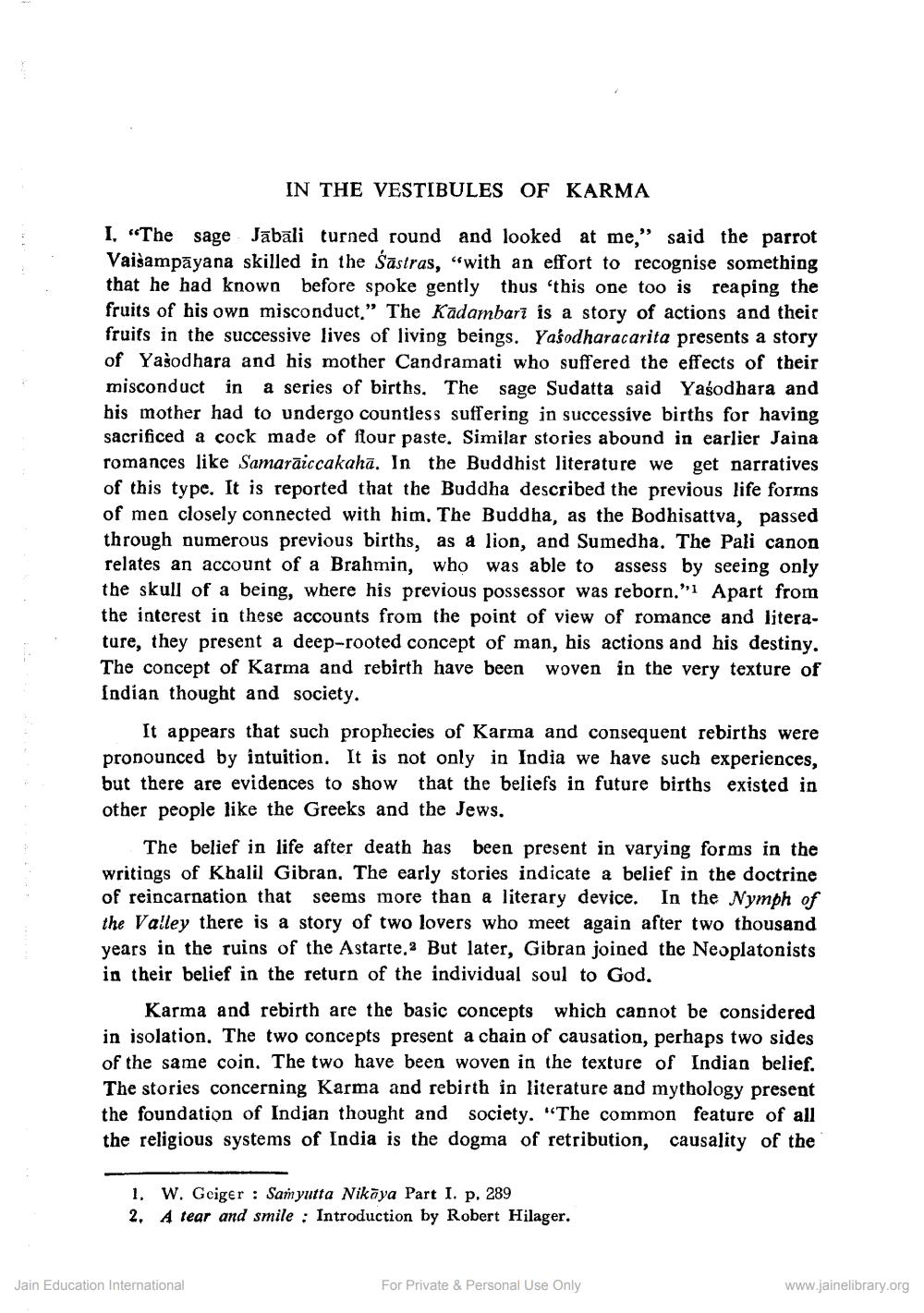Book Title: Karma and Rebirth Author(s): T G Kalghatgi Publisher: L D Indology Ahmedabad View full book textPage 6
________________ IN THE VESTIBULES OF KARMA I, “The sage Jābali turned round and looked at me," said the parrot Vaišampāyana skilled in the śastras, “with an effort to recognise something that he had known before spoke gently thus "this one too is reaping the fruits of his own misconduct." The Kadambari is a story of actions and their fruits in the successive lives of living beings. Yasodharacarita presents a story of Yagodhara and his mother Candramati who suffered the effects of their misconduct in a series of births. The sage Sudatta said Yasodhara and bis mother had to undergo countless suffering in successive births for having sacrificed a cock made of flour paste. Similar stories abound in earlier Jaina romances like Samarāiccakahā. In the Buddhist literature we get narratives of this type. It is reported that the Buddha described the previous life forms of men closely connected with him. The Buddha, as the Bodhisattva, passed through numerous previous births, as a lion, and Sumedha. The Pali canon relates an account of a Brahmin, who was able to assess by seeing only the skull of a being, where his previous possessor was reborn."'i Apart from the interest in these accounts from the point of view of romance and literature, they present a deep-rooted concept of man, his actions and his destiny. The concept of Karma and rebirth have been woven in the very texture of Indian thought and society. It appears that such prophecies of Karma and consequent rebirths were pronounced by intuition. It is not only in India we have such experiences, but there are evidences to show that the beliefs in future births existed in other people like the Greeks and the Jews. The belief in life after death has been present in varying forms in the writings of Khalil Gibran. The early stories indicate a belief in the doctrine of reincarnation that seems more than a literary device. In the Nymph of the Valley there is a story of two lovers who meet again after two thousand years in the ruins of the Astarte. But later, Gibran joined the Neoplatonists in their belief in the return of the individual soul to God. Karma and rebirth are the basic concepts which cannot be considered in isolation. The two concepts present a chain of causation, perhaps two sides of the same coin. The two have been woven in the texture of Indian belief. The stories concerning Karma and rebirth in literature and mythology present the foundation of Indian thought and society. "The common feature of all the religious systems of India is the dogma of retribution, causality of the 1, W. Geiger : San yutta Nikaya Part I. p. 289 2. A tear and smile : Introduction by Robert Hilager. Jain Education International For Private & Personal Use Only www.jainelibrary.orgPage Navigation
1 ... 4 5 6 7 8 9 10 11 12 13 14 15 16 17 18 19 20 21 22 23 24 25 26 27 28 29 30 31 32 33 34 35 36 37 38 39 40 41 42 43 44 45 46 47 48 49 50 51 52 53 54 55 56 57 58 59 60 61 62 ... 82
